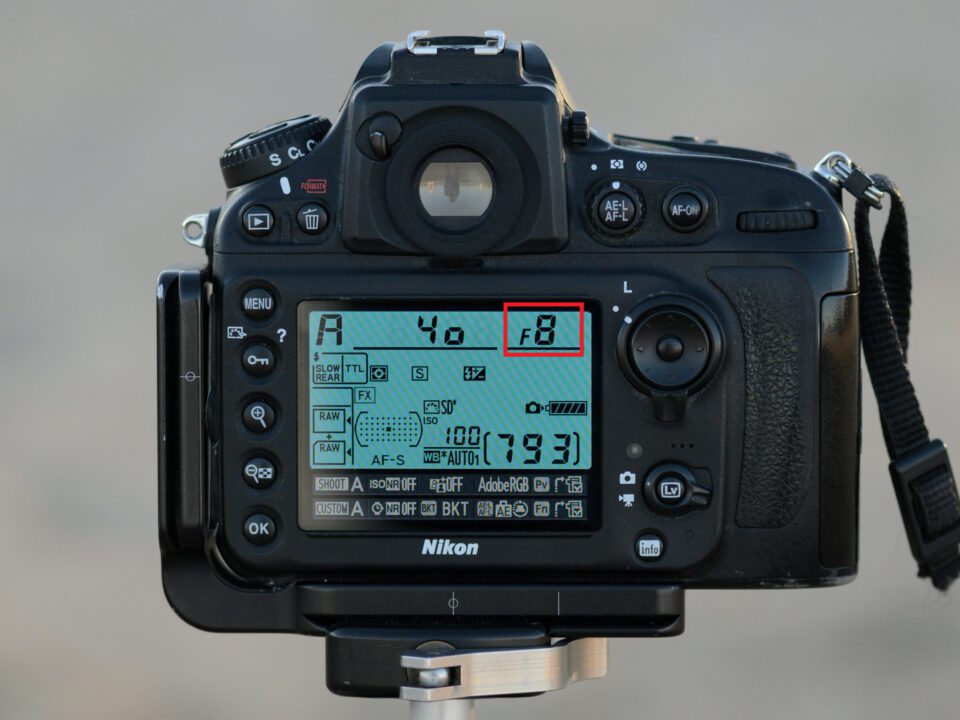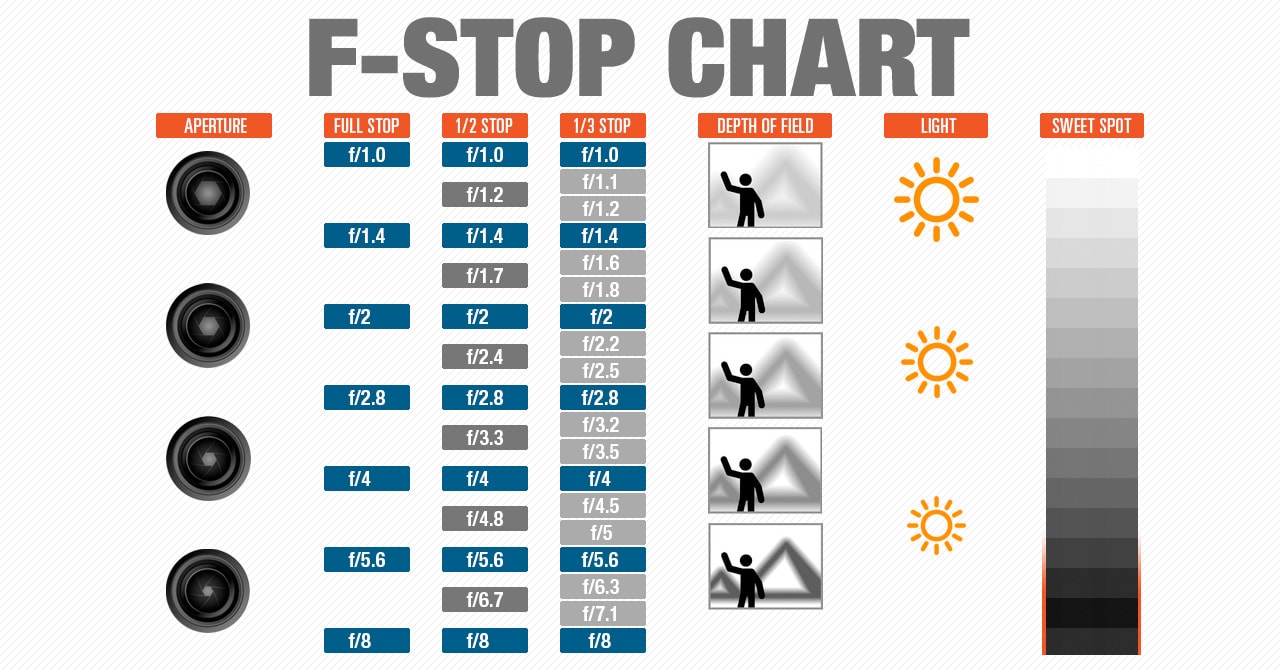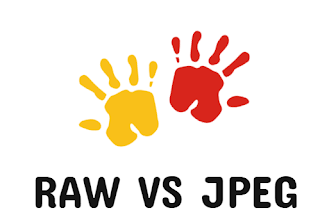Understanding F-Stop
What is F-Stop?
F-stop is the number that camera shows you when you change the size of the lens aperture.
You might have seen this in your camera before. On your camera’s LCD screen or viewfinder, the f-stop looks like this: f/2.8, f/4, f/5.6, f/8, f/11, and so on. Sometimes, it will be shown without a slash in between like f2.8, or with a capital “F” letter in the front like F2.8, which means the exact same thing as f/2.8. These are just examples of different f-stops, and you might come across much smaller numbers like f/1.2 or much larger ones like f/64.
What Does the “f” Stand For?
The “f” stands for “focal length”. When you substitute focal length into the fraction, you’re solving for the diameter of the aperture blades in your lens. (Or, more accurately, the diameter that the blades appear to be when you look through the front of the lens).
For example, say that you have an 80-200mm f/2.8 lens fully zoomed out to 80mm. If your f-stop is set to f/4, the diameter of the aperture blades in your lens will look exactly 20 millimeters across (80mm / 4), whereas at f/16, the diameter will be reduced to mere 5 millimeters (80mm / 16).
This is a cool concept. It also makes it easy to visualize why an aperture of f/4 would be larger than an aperture of f/16. Physically, at f/4, your aperture blades are open much wider, as shown below:




Comments
Post a Comment